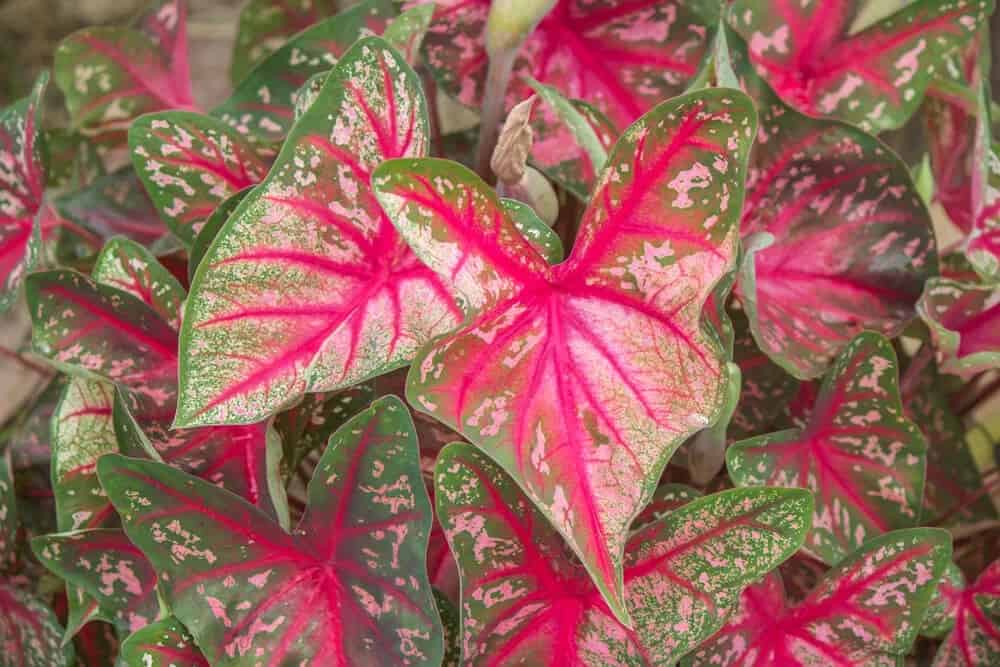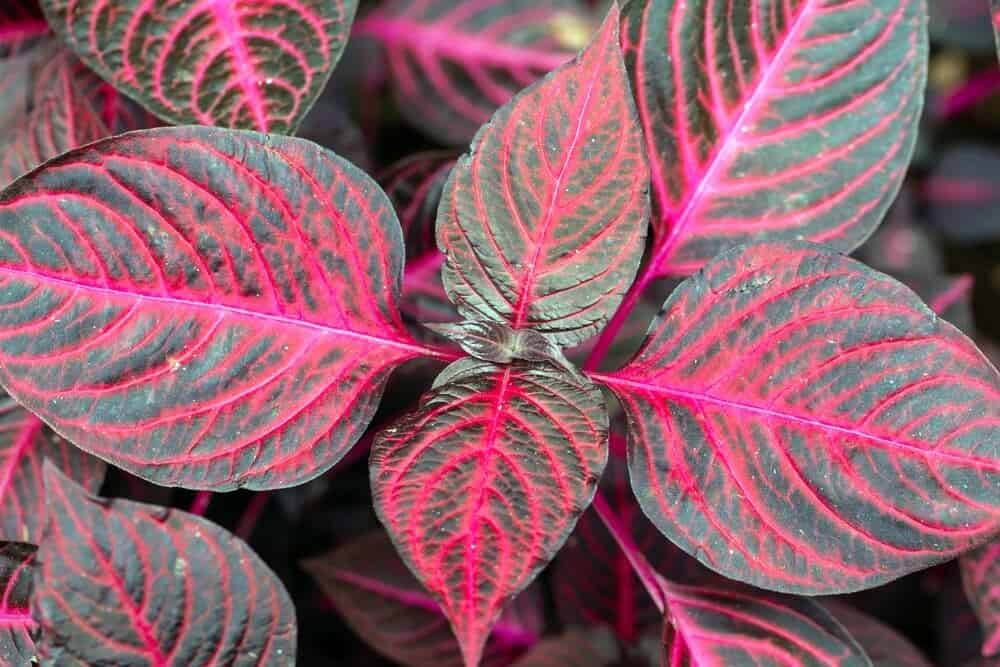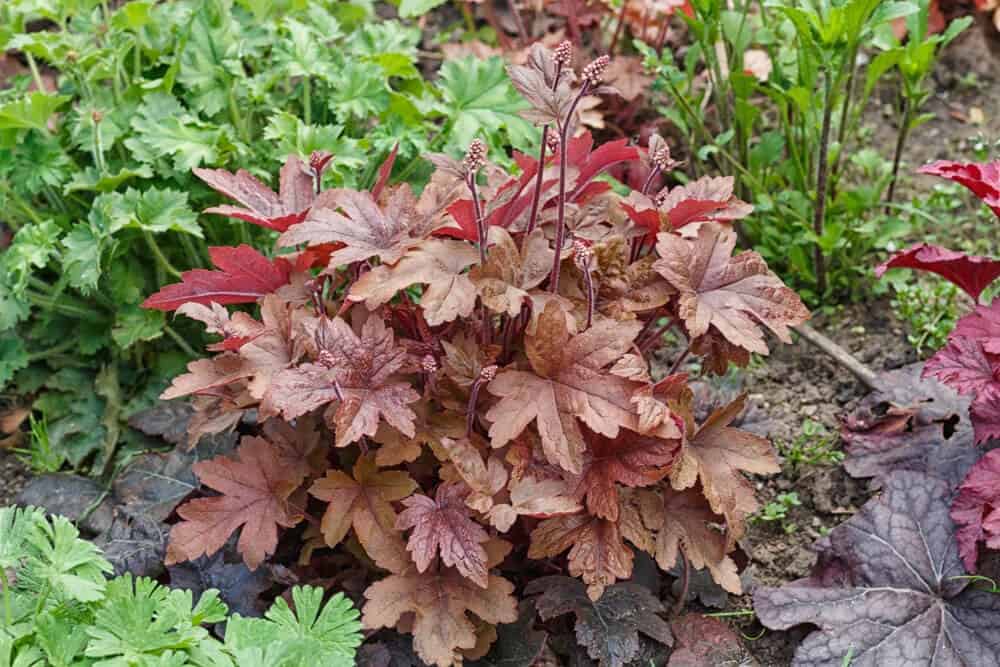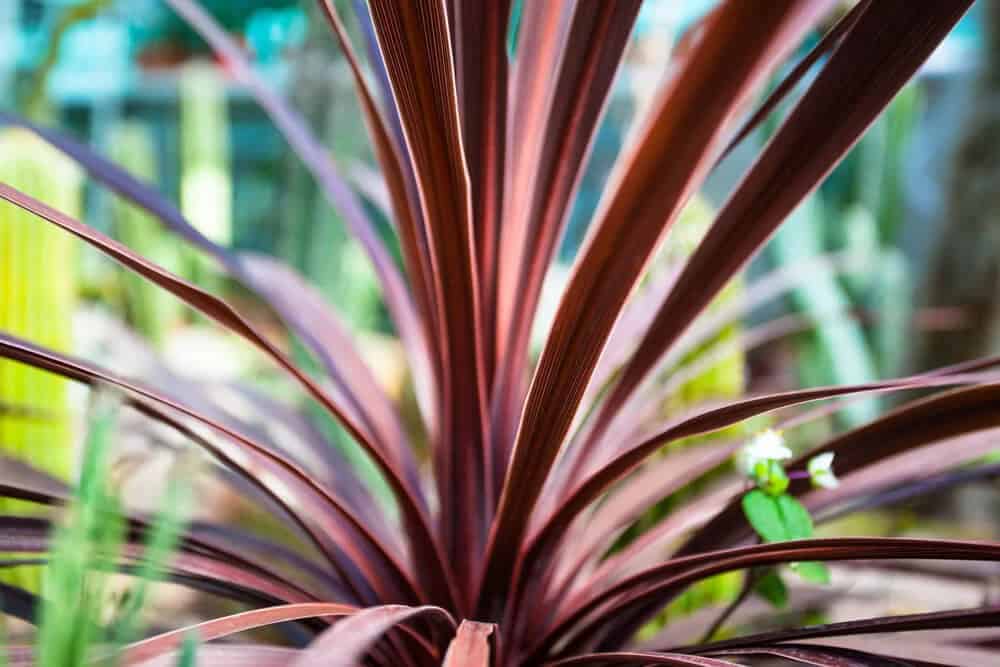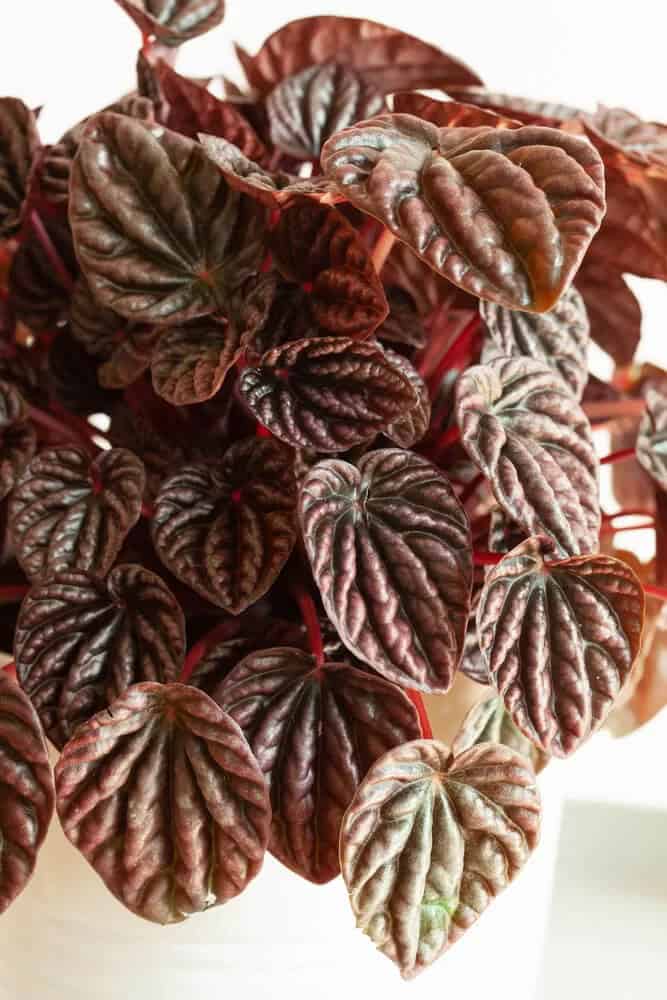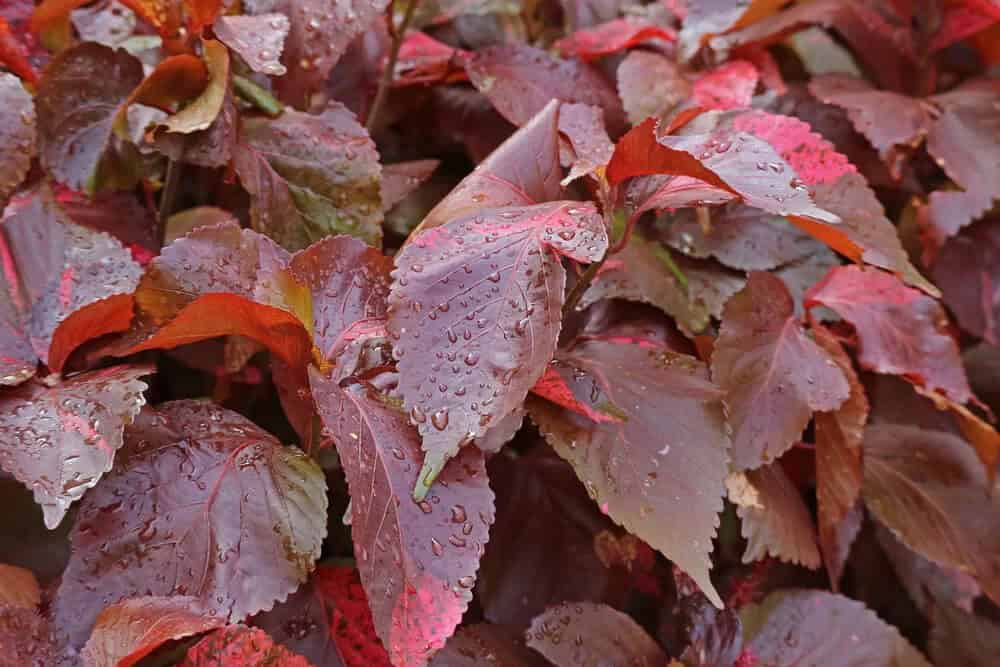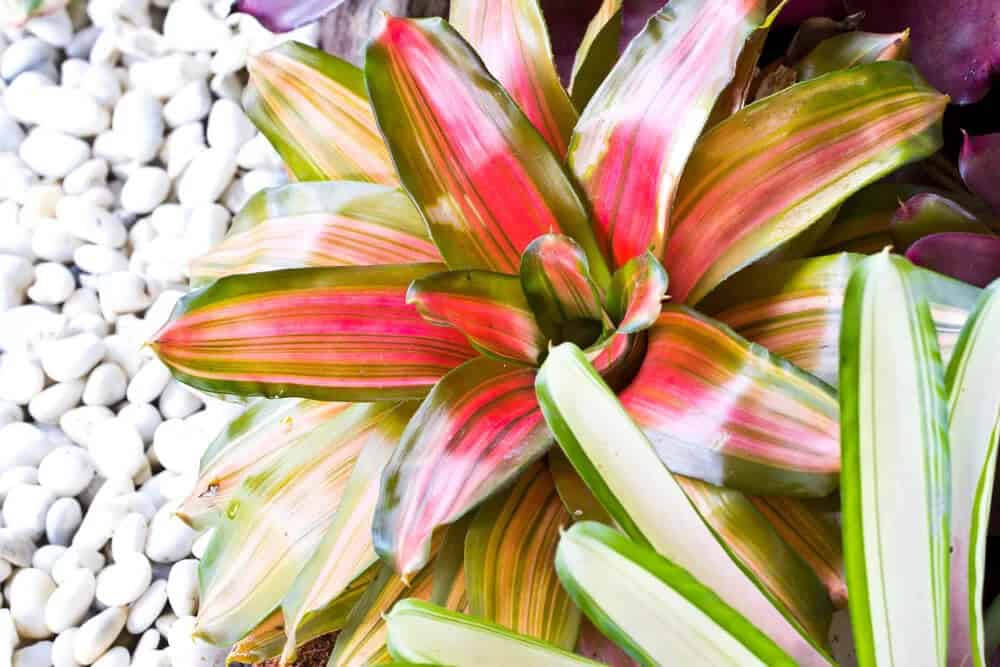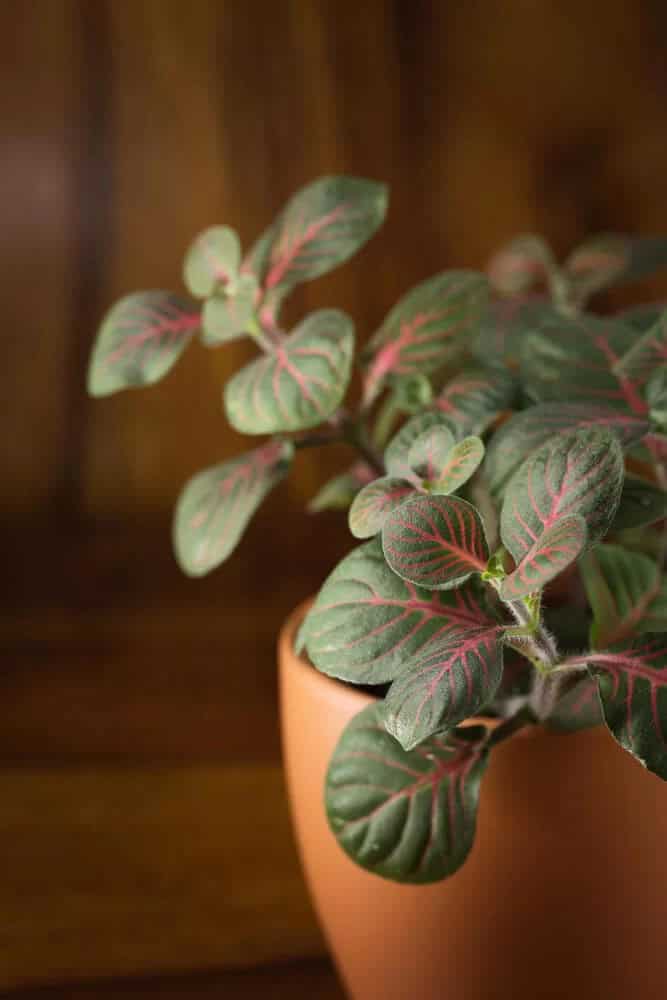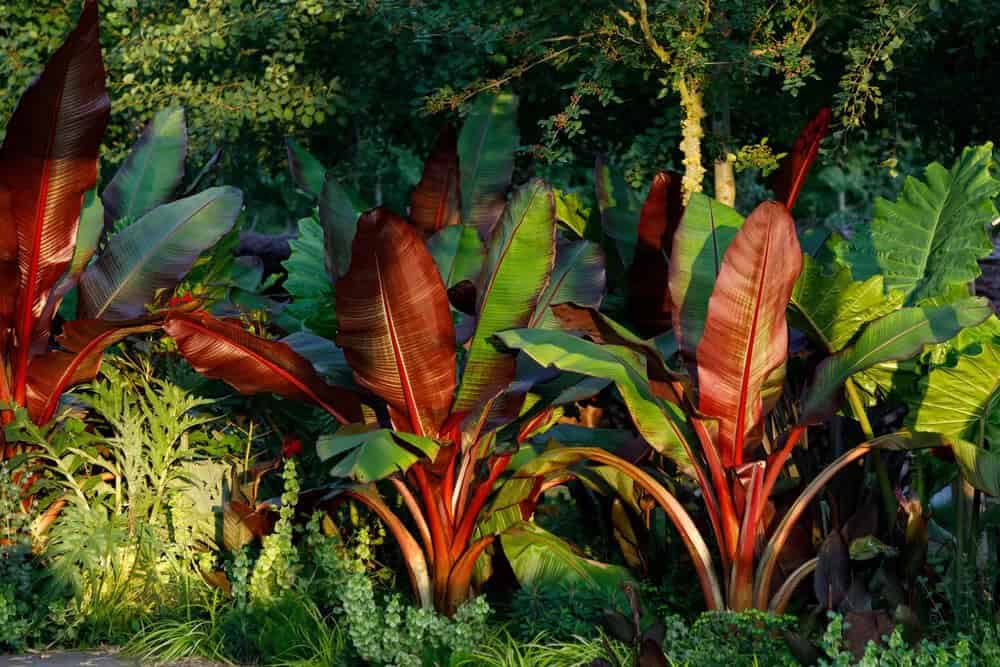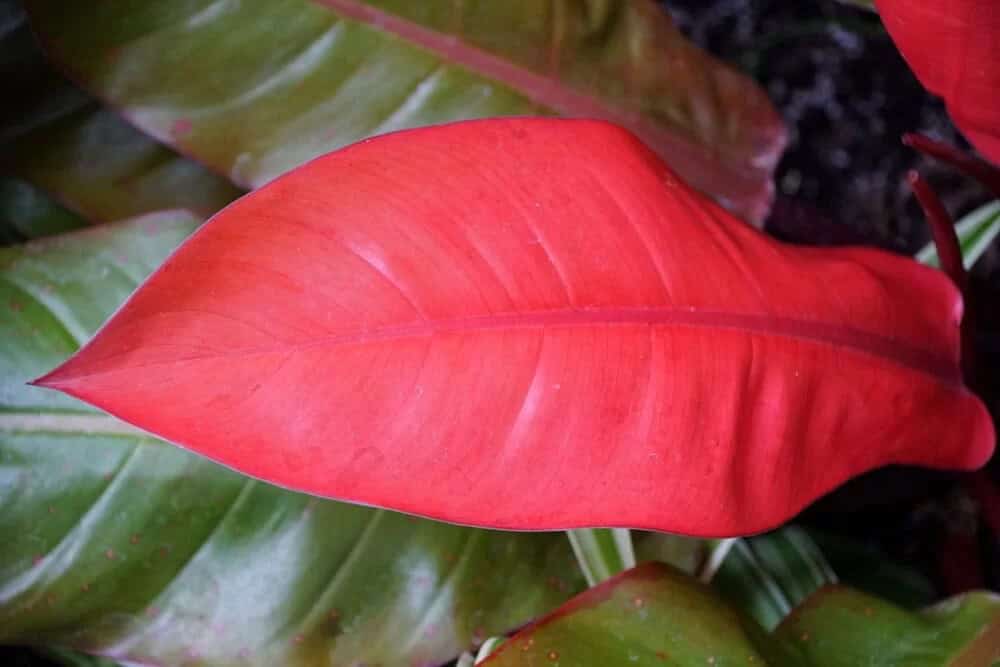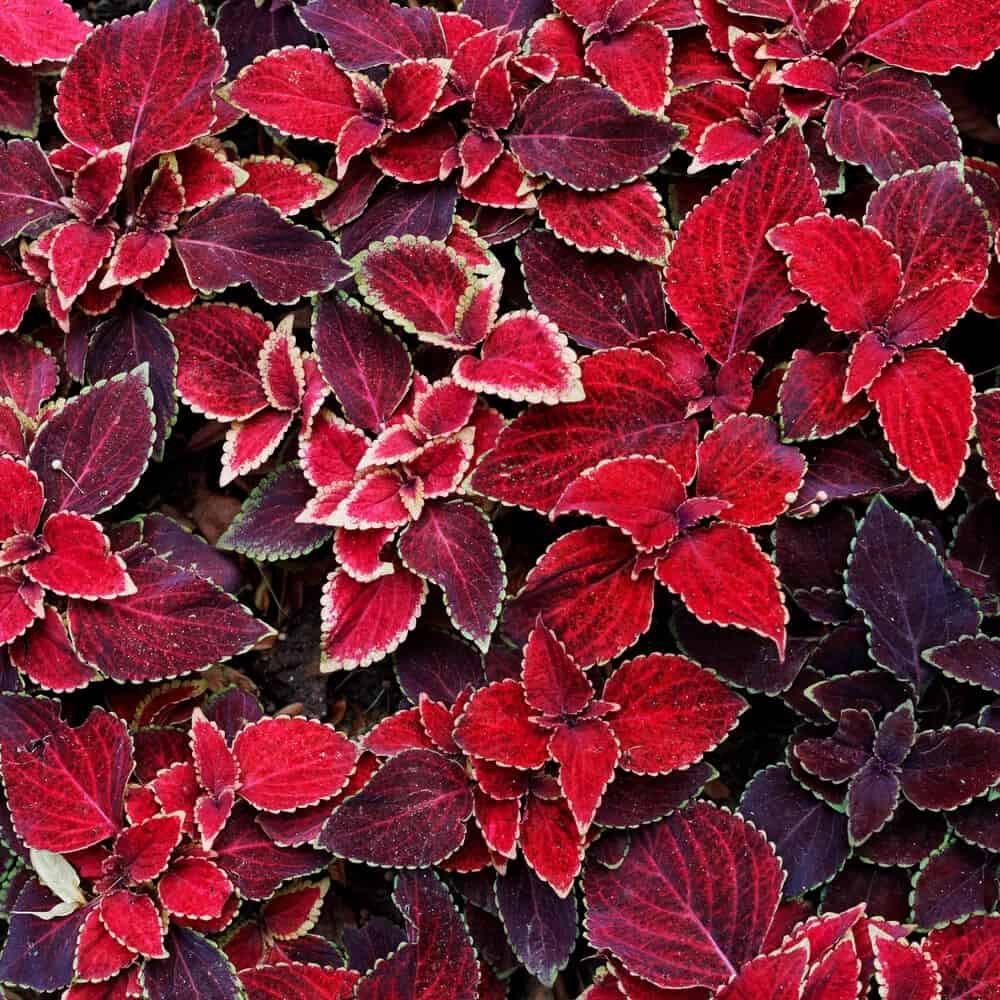While it’s common to assume that houseplants get their color from flowers, this isn’t always the case. In fact, many plants boast stunning red hues on their leaves alone, adding a pop of vibrancy to indoor spaces whether they’re in bloom or not. What’s more, these red-leafed wonders are more abundant than you might think. Our list of 17 examples will show you that there are plenty of options to choose from, each capable of bringing a touch of elegance and warmth to your home.
Key Takeaways
When exploring the fascinating world of houseplants featuring striking red leaves, one can’t help but uncover a treasure trove of intriguing facts. As you delve into this list, you’ll gain valuable insights into the characteristics and origins of these vibrant plants.
Notably, four key takeaways emerge: the diverse array of shapes and hues in which red leaves present themselves; the role of cultivation in producing these distinctive colors; the tropical roots of many species with red foliage; and the fact that plants with red leaves often exhibit a range of leaf colors beyond just red.
17 Mind-Blowing Houseplants with Red Leaves You Should Plant Today
Red Aglaonema (Aglaonema commutatum)
The red aglaonema is a standout among the many houseplants in the Aglaonema family, renowned for their vibrant foliage. Specifically, this variety is ideal for those who adore the bold statement made by its striking red leaves. Also known as Chinese evergreen, this plant’s unique characteristic lies in its dark red foliage featuring intricate green margins. When placed in a spot with bright indirect light, it will effortlessly reach a height of under two feet, thriving in its new environment.
Elephant Ears (Caladium)
Tropical houseplant enthusiasts are no strangers to the majestic elephant ear plants. Their leaves, often referred to as ears due to their enormous size and shape reminiscent of an elephant’s, are undoubtedly a striking feature. Like many plants on this list, elephant ears come in diverse varieties, each boasting distinct leaf colors. When selecting an elephant ear, it’s essential to consider the desired red hue before making a purchase.
Poinsettia (Euphorbia pulcherrima)
While poinsettias may not be the most exotic houseplants, they’re undoubtedly one of the most iconic and festive. Their striking red foliage is undeniably eye-catching, particularly during the winter holiday season. What’s fascinating about this popular plant is that its ‘leaves’ aren’t actually leaves at all. Instead, they’re specialized bracts that envelop the tiny flower cluster at the center of the plant.
While botanical nuances aside, poinsettias remain a beloved choice for anyone who loves the bold, crimson hue they bring to any room.
Herbst’s Bloodleaf (Iresine herbstii)
The Herbst’s bloodleaf plant boasts an extraordinary display of vibrant leaves that set it apart from other red-leaved plants. The neon-red veins on these leaves are particularly striking, while the rest of the leaf has a deeper, richer shade reminiscent of blood. These unique colorations have led to some fascinating common names, including ‘beef plant’ and ‘chicken gizzard plant’.
Whether you choose to grow this plant outdoors as a perennial or indoors as part of your houseplant collection, its bold red foliage is sure to make a dramatic statement wherever it thrives.
Coral Bells (Heuchera ‘Forever Red’)
While many people think that coral bells are only suitable for outdoor growth, as they can thrive as perennials in various regions of the United States, it’s actually a versatile plant that can also survive and even flourish indoors. In fact, some varieties can tolerate lower light conditions, making them perfect for indoor growing spaces.
What sets coral bells apart from other houseplants is its unique foliage, with some cultivars boasting reddish bronze leaves, such as Heuchera ‘Forever Red’, which makes it a standout choice for those seeking a pop of color indoors.
Polka Dot Plant (Hypoestes phyllostachya)
The Polka Dot Plant’s popularity stems from its unique ability to create a stunning visual display, regardless of the specific variety grown. The leaves of this houseplant are characterized by prominent speckles of pink, white, or red set against a rich green backdrop. For those who crave red-hued foliage, it’s essential to choose a variety that showcases this feature prominently.
However, what sets Polka Dot Plants apart is their ability to thrive when planted in groups and combined with varieties featuring different colors. This approach creates an intricate color display that few plants can match, making for a visually striking addition to any room.
Red Grass Palm (Cordyline australis ‘Red Star’)
The Red Grass Palm’s striking visual appeal stems from multiple facets. One prominent aspect is its extraordinary foliage – long, palm-like fronds that showcase a deep, almost eerie red hue. This unique coloration creates a rounded yet spiky canopy that crowns the single main trunk of the plant. As an excellent houseplant option, the Red Grass Palm does come with one caveat: it’s a larger-than-average species. At maturity, this plant can reach heights of up to 15 feet tall.
While indoor growing conditions may trim its stature, smaller mature sizes remain common.
Red Peperomia (Peperomia caperata)
While some may seek out the most vibrant, fire-engine red hues in houseplants, others might prefer a more understated approach. For those who fall into this latter category, the red peperomia plant offers a delightful solution. Its leaves boast a rich, yet subdued red tone that provides a beautiful contrast to its deeper veins and textured surface.
This unique combination of color and texture can be a fantastic addition to any indoor planting arrangement, making it an ideal choice for hobbyist gardeners seeking a sophisticated touch.
Copperleaf Plant (Acalypha wilkesiana)
The copper leaf plant offers an alternative option for those seeking a red-leaved houseplant with more room for a larger species. At maturity, this plant can grow several feet tall and wide, developing a shrub-like structure. Yet, if you’re not keen on your copperleaf plant reaching its full potential size, regular pruning can help maintain a smaller stature. Regardless of the approach, this plant will consistently display broad leaves boasting a warm, reddish-copper hue.
Blushing Bromeliad (Neoregelia carolinae)
When it comes to creating visually appealing planting designs, contrast is a crucial element to consider. A classic example of this principle in action is the blushing bromeliad, which boasts striking green and yellowish streaks along its leaves. However, what truly sets this plant apart is the bold, reddish-pink hue that dominates its center. This unexpected pop of color provides a delightful contrast to the surrounding foliage, making it a standout addition to any arrangement.
By incorporating plants with varying levels of contrast, you can create dynamic and engaging visual displays that will catch the eye and hold attention.
Black Star Nerve Plant (Fittonia albivenis ‘Black Star’)
While many plants on this list boast predominantly red foliage, the appeal of the black star nerve plant lies in its tasteful use of crimson accents. The leaves themselves are a deep green hue, but it’s the vibrant red veins that truly set this plant apart. Rather than overwhelming the senses with broad swaths of color, these subtle hints of red add a touch of elegance to an otherwise understated leaf structure.
For those who appreciate the beauty of red plants without wanting them to dominate their houseplant arrangements, the black star nerve plant offers a thoughtful compromise.
Red Abyssinian Banana (Ensete ventricosum)
When people first learn about the red Abyssinian banana tree, they often assume it will produce bananas or edible fruits due to its name. However, this species is actually entirely ornamental, meaning you won’t get any harvest from it. What sets this plant apart are its enormous leaves, which can grow up to several feet in length and boast a striking dark red color that’s quite unique.
In fact, the foliage of the red Abyssinian banana tree is its main attraction, with some individual leaves reaching impressive sizes.
Painted Leaf Begonia (Begonia rex)
While many people are familiar with flowering annual begonias that thrive outdoors during warmer months, the painted leaf begonia stands out for its striking foliage rather than its blooms. The leaves of this variety boast intricate patterns and colors, featuring combinations such as light green and deep red patches, or even solid shades of crimson. What’s more, painted leaf begonias are surprisingly adaptable to shadier environments, making them an excellent choice for indoor cultivation.
Croton (Codiaeum variegatum ‘Norma’)
Croton plants are renowned for their kaleidoscope of colors, often featuring an array of vibrant hues on a single plant. The ‘Norma’ cultivar stands out for its striking red foliage, punctuated by splashes of deep green. This variety is a top choice for those seeking to add a pop of crimson to their indoor garden, as it’s primarily bright red with subtle undertones of dark green.
Inch Plant (Callisia Repens’ Pink Panther’)
While some plants boast vibrant red hues, the inch plant takes a more subtle approach. Its leaves are predominantly green with delicate hints of purplish red, allowing other elements in the space to shine. Despite their small size, these leaves should not be underestimated – they can grow up to an inch in just one week, earning the plant its name. As you cultivate this species, prepare for it to expand significantly beyond its initial size.
Prince of Orange Philodendron (Philodendron)
The Prince of Orange Philodendron’s name might evoke images of vibrant orange hues, but surprisingly, its leaves are predominantly green. Large, mature leaves dominate the plant’s appearance, with their green coloration. However, as new growth emerges, it begins with a striking red tone that gradually fades over time. This consistent production of fresh leaves ensures that the Prince of Orange Philodendron can provide a subtle yet enduring splash of red in your garden.
Coleus (Plectranthus scutellarioides)
The allure of Coleus plants lies in their striking foliage, which boasts an impressive palette of colors, including vibrant red hues. While some varieties may showcase single-toned leaves, others exhibit a mesmerizing two-tone effect, where lighter shades subtly highlight the serrated edges of each leaf. As a result, Coleus is a must-have for anyone who appreciates houseplants with bold, red-leaved beauty.
Frequently Asked Questions About Houseplants with Red Leaves
Do Plants with Red Leaves Photosynthesize?
While plants with red leaves share the same reliance on photosynthesis as other plants, their very existence hinges on this process. In fact, without photosynthesis, a red-leaved plant would struggle to survive. It’s crucial to understand that the difference in pigmentation between red-leafed and green-leafed plants doesn’t impact the way they convert sunlight into energy. Furthermore, it provides no insight into an individual plant’s daily sunlight requirements.
Are Any Plants with Red Leaves Native to Florida?
While there are numerous plant species boasting vibrant red leaves that thrive in Florida’s climate, only a select few can claim native origins within the region. A significant factor contributing to this scarcity is the global distribution of many naturally occurring red-leafed plants. Moreover, an abundance of cultivated varieties have been developed over time, rendering them non-native to any specific region.
What is the Advantage of Red Leaves?
While red-leaved plants may not possess any unique advantages, their rarity can be attributed to the lack of selective pressure driving their evolution. In other words, there isn’t a strong incentive for plants to develop red leaves as a survival strategy.
However, the fact that some species do display red foliage suggests that humans have an affinity for this trait and have actively sought out or cultivated plants with this characteristic, ultimately shaping the diversity of plant species we see today.
Why Are Some Plants Red Instead of Green?
In plants with red leaves, a unique combination of pigments plays a crucial role in determining their color. One key factor is the presence of chlorophyll, a green pigment that’s found in most plant leaves. However, what sets apart red-leaved plants from their green counterparts are higher ratios of other pigments, including xanthophyll, carotenoids, and anthocyanins. These pigments, which are naturally occurring in some plants, work together to produce the characteristic red hue.
Do Red Leaves Symbolize Anything?
Red leaves on plants have evolved their own spiritual and cultural significance over time, much like other notable plant features. The symbolic meaning associated with red leaves can vary greatly depending on the culture in question. In many instances, red leaves, akin to the color red itself, are imbued with intense emotions such as love, anger, and passion. However, this is just the beginning of the story.
To truly delve into the world of houseplants featuring striking red foliage, one must also address the numerous questions that arise from this fascinating topic. Here, we will attempt to shed some light on these inquiries, providing valuable insights for gardeners eager to learn more.
17 Unbelievable Houseplants with Red Leaves That You’ll Love
With this comprehensive guide, you’re now equipped with a vast array of stunning houseplants featuring vibrant red leaves. From diverse plant families to unique forms, these striking specimens can bring a pop of color and drama to any space. Some will subtly accentuate the room’s aesthetic, while others will command attention with bold patches of bright red.
By familiarizing yourself with the distinctive characteristics of each plant on our list, you’ll be well-prepared to find the perfect red-leaved houseplant to enhance your home.

